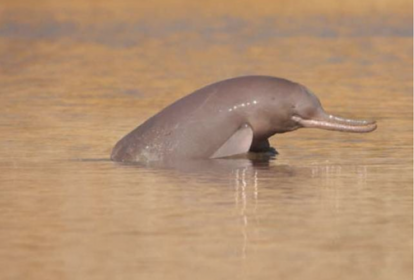Principal Investigator: Dr Uzma Khan, WWF Pakistan
Funding year: 2016
Main objectives:
- To complement previous surveys in 2001, 2006 and 2011, complete a fourth survey, to Chashma-Taunsa Barrage, Taunsa-Guddu Barrage and Guddu-Sukkur Barrage;
- Expand on the previous three surveys by including the additional areas of Sukkur-Kotri Barrage and Jinnah-Chashma Barrage;
- Provide survey training to build local capacity;
- Create habitat maps using various environmental and habitat features.
Main outcomes:
- A survey of the three largest sub-populations of dolphins: Chasham-Taunsa, Taunsa-Guddu and Guddu-Sukkur was completed between March-April 2017, incorporating 808 km survey effort.
- A total of 1,987 dolphins were sighted (based on the sum of the estimated best (B) group size estimation, following Braulik 2006). The dolphin encounter rate increased dramatically as the survey proceeded downstream;
- Direct counts-based abundance estimates suggests that the population has been increasing, since at least 2001
- Total individuals 965 (2001), 1,410 (2006), 1,312 (2011) and 1,987 (2017 this study)
- The report concludes that the rise in population numbers throughout the Indus River Dolphins known range is likely a consequence of the 1970s dolphin hunting ban
- No dolphins were sighted at Jinnah-Chashma, although the area was surveyed . It was not possible to survey the Sukkur-Kotri barrage area.
Reports/Papers:
Aisha, H., Braulik, G., Khan, U., Leslie, A. and Nawaz, R. (2017). Indus River Dolphin (Platanista gangetica minor) - an update on the current population assessment and conservation challenges. Submitted to the Scientific Committee of the International Whaling Commission, Bled, Slovenia, 2017. SC/67A/SM/22.




